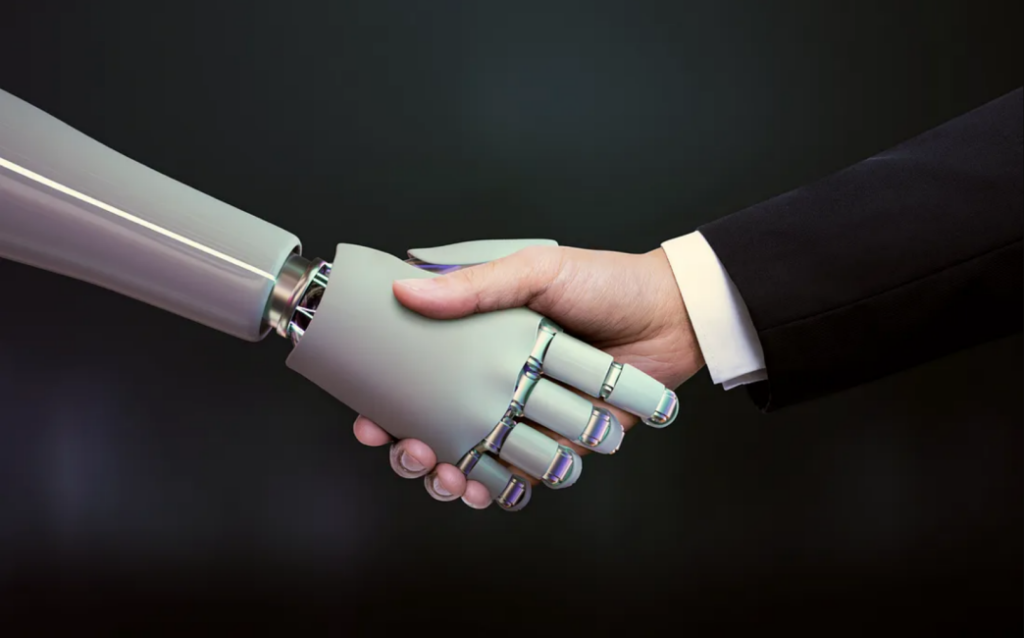The dispute between AI and humans has become a big topic in today’s world when artificial intelligence is being incorporated into every aspect of technology.
While building and developing intelligent systems that can execute tasks that are similar to those carried out by humans is the aim of artificial intelligence, we can’t help but wonder if AI is sufficient on its own.
Let’s talk about whether humans and AI can form a successful alliance.
Human Thinking
The term “human thinking” refers to the particular cognitive functions and activities that apply to people. It involves the intricate mental processes that enable people to collect, organize, interpret, and produce ideas.
Perception, memory, focus, language, reasoning, problem-solving, and creativity are just a few of the cognitive processes that make up human thought. Together, these processes support people in understanding the world, making sense of information, resolving issues, and reaching decisions.
AI Thinking
Artificial intelligence refers to the creation of computer systems or other devices that are capable of carrying out operations that ordinarily demand for human intelligence. AI strives to emulate and duplicate cognitive skills that are similar to those of humans, including language comprehension, learning, reasoning, and problem-solving.
Through a technique known as machine learning, they can be designed to gain knowledge from experience and enhance their performance over time. AI systems can automatically recognize patterns and they can be designed to gain knowledge from their experience.
Do we make a good alliance?

AI systems excel at processing and analyzing vast amounts of data quickly, recognizing patterns, and making predictions or recommendations based on that data. They can automate repetitive or mundane tasks, freeing up human resources to focus on more complex and creative endeavors.
On the other hand, humans possess unique cognitive abilities, such as creativity, critical thinking, emotional intelligence, and ethical reasoning, which are currently challenging for AI systems to fully replicate. Humans can bring contextual understanding, intuition, empathy, and ethical judgment to complex decision-making processes.
To take full advantage of this collaboration, companies must think of AI as a extension of human capabilities. That is when we can most effectively augment machines and not think of them as a threat.
AI can elevate our analytic and decision-making abilities and heighten creativity

1) Analytic Abilities: AI can process and analyze vast amounts of data quickly and accurately. By leveraging machine learning algorithms, AI systems can identify patterns, correlations, and trends that may not be immediately apparent to humans. This enables us to gain deeper insights and make data-driven decisions more efficiently. AI can help us extract relevant information, and provide summaries or recommendations and apply the insights gained.
2) Decision-making Support: AI systems can provide valuable decision-making support by offering objective analysis and evidence-based recommendations. They can consider multiple factors, assess various scenarios, and simulate outcomes, enabling us to make more informed and rational decisions.
3) Creative Assistance: AI algorithms can generate ideas, suggest novel combinations, and inspire new perspectives. For example, in fields like art, music, or design, AI can assist in generating artistic compositions, creating harmonious melodies, or proposing innovative design concepts. AI can also analyze vast collections of existing creative works to identify trends, styles, or influences, providing inspiration and expanding our creative horizons.
4) Collaborative Exploration: AI can facilitate collaborative exploration and brainstorming sessions. AI-powered chatbots or virtual assistants can engage in conversations, ask probing questions, and help individuals generate ideas or refine concepts. This collaborative interaction between humans and AI can stimulate creativity, challenge assumptions, and foster innovative solutions.
5) Automation of Routine Tasks: By automating routine and repetitive tasks, AI frees up human time and cognitive resources. This allows individuals to allocate more energy towards creative endeavors and higher-level thinking. With mundane tasks delegated to AI, humans can focus on tasks that require imagination fostering a more creative and fulfilling work environment.
Conclusion
While AI can augment our analytic and creative abilities, it does not replace human creativity and intuition. AI lacks the subjective experiences and emotions that often drive creative thinking. The collaboration between humans and AI, where AI assists and enhances human capabilities, is the key to harnessing the full potential of AI for analytics and creativity.
